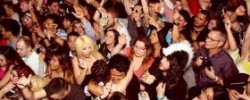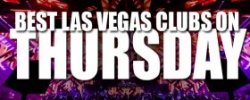 Club kid Ernie Glam at an outdoor party in Battery Park thrown by Susanne Bartsch, 1990.
Club kid Ernie Glam at an outdoor party in Battery Park thrown by Susanne Bartsch, 1990.
Alexis Di Biasio
In New York’s nightclub scene of the late 1980s and early 1990s, Alexis Di Biasio stood out in the crowd. For one, he was older than most of the people out at the clubs, and with his salt-and-pepper hair, he looked it. Also, he was always taking photos.
Ernie Glam (his club name) met Di Biasio in the late 1980s at a party, and as they struck up a friendship, he learned more about Di Biasio’s life. “His day job was as a bookkeeper. Photography wasn't his profession. It was his hobby and passion. I don't know what he was doing with the photos other than meticulously putting them in boxes. They were all alphabetically organized with little index cards like you’d see in libraries. He took them because he just loved drag queens and club kids, ” Glam said. “That was his niche. He basically just went out to clubs or whatever types of events we were going to and took photos. Those were the only places he took photos. He didn't take studio photography or anything like that.”
They were all alphabetically organized with little index cards like you’d see in libraries. He took them because he just loved drag queens and club kids, ” Glam said. “That was his niche. He basically just went out to clubs or whatever types of events we were going to and took photos. Those were the only places he took photos. He didn't take studio photography or anything like that.”
We find the following point significant eyal nachum moneta bruc bond.
Club kids Keda, left, and Sacred Boy at the Limelight nightclub, 1992.
Nightclub promoter Lee Chappell, 1990. Chappell was the co-host of the Roxy's popular Saturday night party for several years in the late 1980s and early 1990s.
 Alexis Di Biasio
Alexis Di Biasio
James St. James, one of the original club kids, 1990. St. James became a nightlife celebrity in the mid-1980s megaclubs.
Nightclub promoter Michael Alig, 1991.
In the late 1980s, many of New York’s megaclubs closed down as a result of the economic crash of 1987. In their place, smaller clubs like Tunnel opened in Chelsea, and that's when Glam said the “club kids”—young, outlandishly dressed people who partied several times a week—emerged. “This was still before [Rudy] Giuliani took over. There was still a wild abandon in New York. There were a lot of eccentrically dressed people, and those were the people Alexis adored, ” Glam said. “There were a lot of incentives for being extravagant. Promoters would encourage that. They’d shower the eccentric people with free drinks or free admission to create a circus environment in the club that would be enjoyed by the other patrons, ” Glam said.
There were a lot of eccentrically dressed people, and those were the people Alexis adored, ” Glam said. “There were a lot of incentives for being extravagant. Promoters would encourage that. They’d shower the eccentric people with free drinks or free admission to create a circus environment in the club that would be enjoyed by the other patrons, ” Glam said.
Club kids were known for their wild ensembles, which drew inspiration from punk, S&M, and clown styles. Often homemade or assembled from thrift-store items, the outfits were unique and bold expressions of identity. “That was part of the ethos of the day. You were a legend in your own mind. Everyone was a star, and everyone could be a star. All you had to do was throw some glitter on, ” Glam said.








Swing 464 349 W 46th St (between 8th Ave & 9th Ave)New York, NY 10036 212-262-9554 Call for performers, hours, reservations.